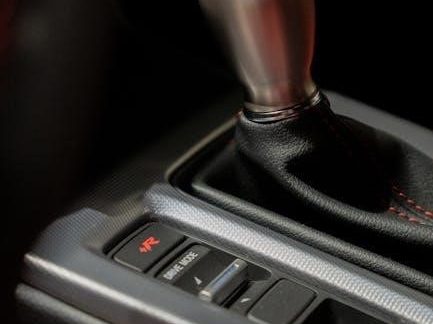The Camaro’s transmission system offers a blend of manual and automatic options, each designed for specific performance needs, ensuring optimal drivetrain efficiency and driver control.
1.1 Overview of Camaro Transmission Types
The Camaro features various transmission types, including manual and automatic options, catering to different driving preferences and performance requirements. Manual transmissions, such as the Saginaw 3-speed, Muncie 4-speed, and Tremec TR6060, offer precise control and are popular among enthusiasts. Automatic transmissions, like the Powerglide, TH350, and TH400, provide convenience and smooth shifting. Modern models also incorporate advanced automatic systems for improved efficiency and performance, ensuring a blend of power and drivability for both everyday driving and high-performance scenarios.
1.2 Importance of Understanding Transmission Mechanics
Understanding Camaro transmission mechanics is crucial for optimal performance, maintenance, and troubleshooting. Knowing how manual and automatic systems function ensures proper gear engagement and avoids damage. Familiarity with torque capacities, gear ratios, and fluid requirements helps maintain efficiency. This knowledge also aids in identifying common issues like slipping or noisy operation, enabling timely repairs. For enthusiasts, understanding transmission mechanics is key to upgrades and swaps, ensuring compatibility and enhanced performance.

History of Camaro Transmissions
Camaro transmissions evolved from basic 3-speed manuals in early models to advanced 6-speed units, reflecting performance and technological advancements across generations.
2.1 Evolution of Manual Transmissions in Camaro
The evolution of manual transmissions in the Camaro reflects a journey from basic functionality to high-performance capability. Early models featured 3-speed Saginaw units, known for durability. The 1960s saw the introduction of the Muncie 4-speed, a favorite among enthusiasts, especially the M22 “Rock Crusher” for its strength. By the 2010s, the Tremec TR6060 6-speed became standard, offering precise control and higher torque capacity, enhancing both performance and driver engagement.
2.2 Key Milestones in Transmission Development
The development of Camaro transmissions has seen significant milestones. The 1967 introduction of the Muncie M22 “Rock Crusher” marked a leap in durability for high-performance applications. In 1974, the Borg Warner T-10 replaced the Muncie, offering a stronger alternative. The 2010 debut of the Tremec TR6060 6-speed manual transmission brought modern precision and torque capacity. Recent advancements include the integration of automatic transmission features into manual designs, enhancing drivability while maintaining driver control.
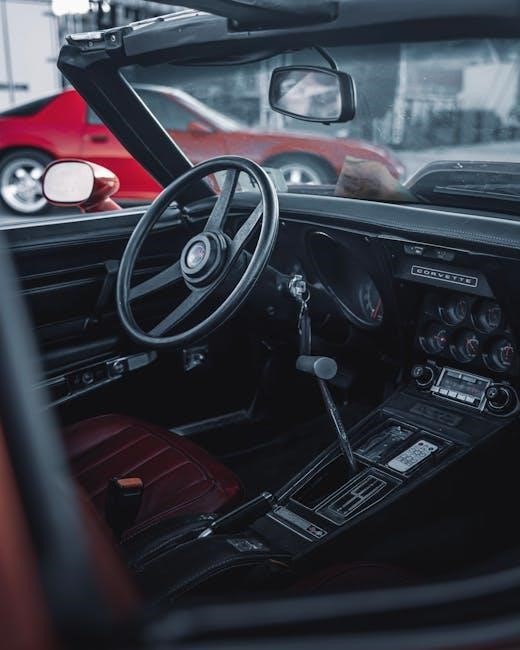
Manual Transmission Models in Camaro
The Camaro features a range of manual transmissions, including the Saginaw 3-Speed, Muncie 4-Speed, Borg Warner T-10, and Tremec TR6060, each introduced across different eras to enhance performance and drivability.
3.1 Saginaw 3-Speed Manual Transmission
The Saginaw 3-Speed manual transmission was a base option for early Camaros, known for its durability and simplicity. It featured a straightforward design with three forward gears, making it suitable for non-high-performance models and smaller engines. The Saginaw was lightweight and easy to maintain, offering reliable performance for everyday driving. Its availability spanned across the first generation, particularly in 1967-1969 models, providing a cost-effective and efficient manual option for Camaro owners.
3.2 Muncie 4-Speed Manual Transmission
The Muncie 4-Speed manual transmission was a staple in high-performance Camaros, offering close-ratio gearing for enhanced acceleration and control. Available in M20 wide-ratio, M21 close-ratio, and M22 heavy-duty configurations, the Muncie was ideal for powerful engines, with the M22 “Rock Crusher” featuring straight-cut gears for durability and strength. Its design catered to racing and high-torque applications, making it a favorite among enthusiasts. The Muncie was phased out in 1974, replaced by the Borg Warner T10, but remains iconic in Camaro history.
3.3 Borg Warner T-10 Transmission
The Borg Warner T-10 transmission became a standard in Camaros starting in 1974, replacing the Muncie 4-speed. Known for its strength and durability, the T-10 was overbuilt for the Camaro’s stock power capacity, making it highly reliable. It featured a close-ratio design and a reputation for being quieter than the Muncie M22. The T-10 was introduced to simplify production by reducing the need for multiple close-ratio transmissions, offering a balanced blend of performance and everyday drivability. Its robust construction made it a favorite among enthusiasts for high-torque applications.
3.4 Tremec TR6060 6-Speed Manual Transmission
The Tremec TR6060 6-speed manual transmission, featured in the 2010-2015 Camaro SS and ZL1 models, offers enhanced performance and precision. With a torque capacity of up to 420 lb-ft, it is designed for high-performance engines. Its close-ratio gear set and smooth shifting provide improved acceleration and driver engagement. The TR6060 includes a robust design with internal components optimized for durability, making it a popular choice for both track and street driving. Its availability as a conversion kit allows enthusiasts to upgrade older models, ensuring compatibility with various Camaro setups.

Automatic Transmission Models in Camaro
The Camaro features various automatic transmissions, including Powerglide, TH350, and TH400, each offering distinct performance capabilities tailored to specific engine configurations and model years for optimal drivability.
4.1 Powerglide 2-Speed Automatic Transmission
The Powerglide, designated as RPO M35, was an optional 2-speed automatic transmission for the Camaro, available on all first-generation models except the SS396 and Z28. It was a popular choice for 1967-68, especially for L6 and small-block V8 engines, as it was the only automatic option for these configurations. Its usage declined with the introduction of the TH350, which offered better performance and versatility. The Powerglide’s simplicity and reliability made it a practical choice for everyday driving, catering to those who preferred ease of use over high-performance capabilities.
4.2 Turbo Hydramatic 350 (TH350)
The Turbo Hydramatic 350 (TH350) was a standard-duty automatic transmission used across the second-generation Camaro’s production. Initially optional for lower-powered 350 engines, it became the standard automatic choice for smaller engines in 1973 and remained so until 1981. The TH350 featured a square pan with a notched corner and a cable kickdown mechanism. Its reliability and smooth operation made it a preferred choice for everyday driving, while its durability allowed it to handle moderate horsepower, making it versatile for various Camaro models and engine configurations during its tenure.
4.3 Turbo Hydramatic 400 (TH400)
The Turbo Hydramatic 400 (TH400) was a heavy-duty automatic transmission used in Camaros from 1970 to 1974, primarily behind high-horsepower 350s and big-block engines. It featured a pan shaped like the state of Indiana and utilized an electrical kickdown switch. The TH400 was standard in Super Sport and Z28 models equipped with automatics. Its robust design made it suitable for high-torque applications. Identification codes like CK (small block) and CY (big block) were stamped on the case, aiding enthusiasts in verifying authenticity. The TH400 was eventually phased out as horsepower levels declined.
4.4 Modern Automatic Transmissions
Modern Camaro automatic transmissions, such as the 6L50 and 8L90, offer enhanced performance and efficiency. These units feature advanced torque converter lock-up systems and optimized gear ratios for smoother acceleration and better fuel economy. The 6L50 is paired with V6 and smaller V8 engines, while the 8L90 is reserved for higher-performance V8 models. Both transmissions integrate seamlessly with the Driver Information Center, providing real-time feedback and adaptive shift patterns. They also support features like Competitive Mode in Sport driving, ensuring a balance between comfort and performance.
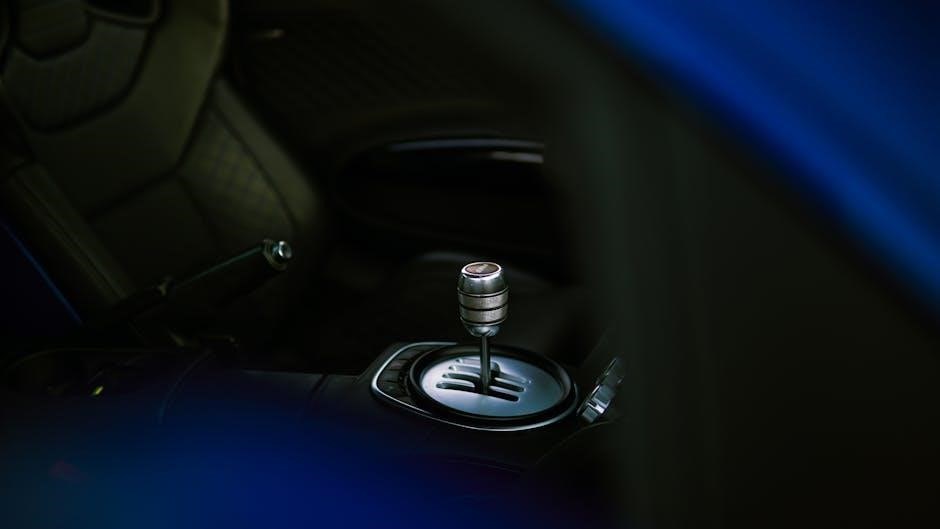
Transmission Identification and Specifications
Camaro transmissions are identified by visual cues, gear ratios, and torque capacities. The M22 features straight-cut gears, while the TH350 has a square pan with a notch.
5.1 Visual Identification of Transmissions
Identifying Camaro transmissions visually involves examining the case, pan shape, and mounting points. The Muncie has a distinct circular access cover, while the Saginaw is smaller and lighter. The Borg Warner T-10 is recognized by its aluminum case and unique bolt pattern. Automatic transmissions like the TH350 and TH400 differ in pan shapes—square with a notch for the TH350 and a more angular design for the TH400. These visual cues help enthusiasts and mechanics distinguish between models without disassembly.
5.2 Gear Ratios and Torque Capacity
Camaro transmissions feature varying gear ratios and torque capacities to suit different driving needs. Manual transmissions like the Saginaw 3-speed and Muncie 4-speed offer gear ratios optimized for performance or economy, while automatics like the TH350 and TH400 balance torque delivery. Torque capacities range from 300 lb-ft for smaller units to over 400 lb-ft for heavy-duty models. Understanding these specifications ensures proper transmission selection and maintenance, optimizing both performance and longevity based on the vehicle’s intended use and power output.
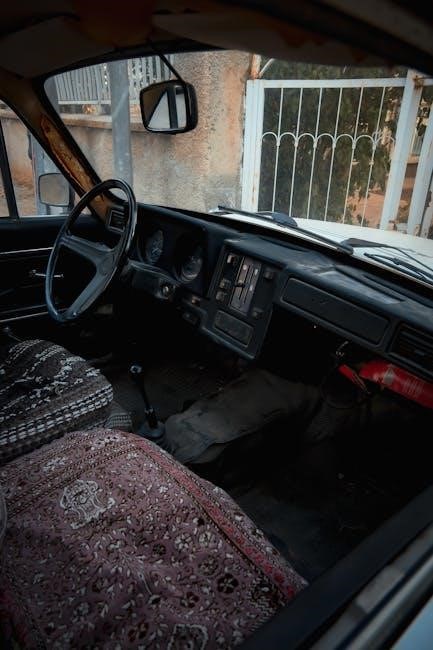
Maintenance and Repair Tips
Regular fluid checks and filter replacements are crucial for transmission longevity. Inspect for leaks and address common issues promptly to prevent major repairs. Use OEM parts and consult repair manuals for accurate procedures.
6.1 Fluid Capacity and Type Recommendations
For optimal performance, use the correct transmission fluid type and ensure proper capacity. Automatic transmissions typically require ATF (Automatic Transmission Fluid), while manual transmissions often use gear oils like 75W-90. Always consult the owner’s manual or a GM-certified technician for specific fluid recommendations tailored to your Camaro’s transmission type and model year. Regular fluid changes help maintain lubrication and prevent wear. Proper fluid levels are crucial for smooth operation and longevity of the transmission system.
6.2 Common Issues and Troubleshooting
Common transmission issues in Camaros include slipping gears, delayed engagement, and fluid leaks. These problems often stem from low fluid levels, worn clutches, or faulty sensors. Troubleshooting involves checking fluid condition and level, inspecting for leaks, and scanning for error codes. Regular maintenance, such as fluid changes and filter replacements, can prevent these issues. For persistent problems, consulting a professional mechanic or referencing repair manuals is recommended to ensure accurate diagnosis and effective solutions.
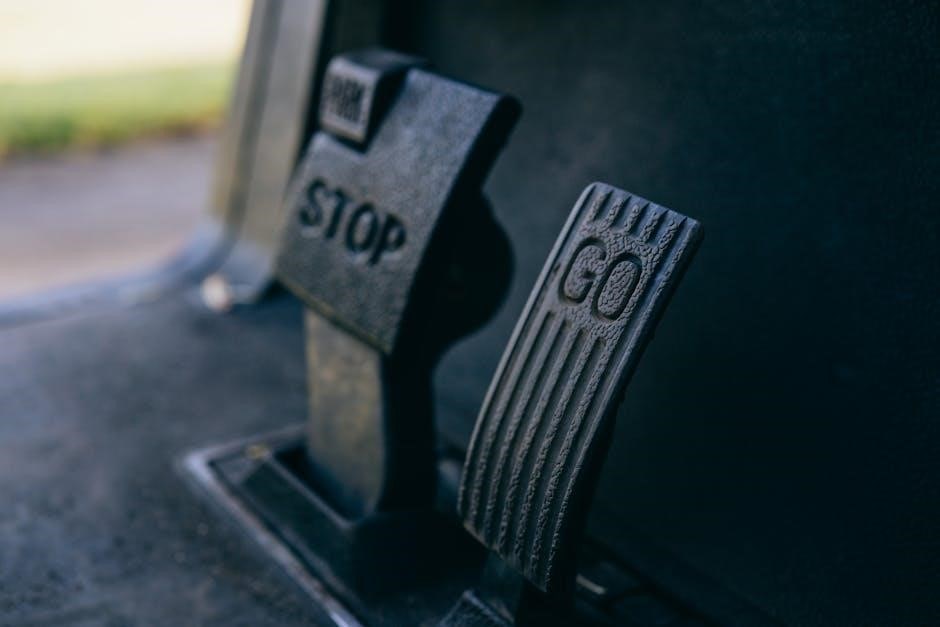
Performance Upgrades and Modifications
Upgrading gears and swapping to modern overdrive transmissions enhances Camaro performance, improving acceleration, fuel efficiency, and drivetrain responsiveness for both street and track driving experiences.
7.1 Upgrading Gears for Enhanced Performance
Upgrading gears in a Camaro’s manual transmission can significantly boost performance. Replacing stock gears with high-performance, close-ratio options enhances acceleration and responsiveness. For instance, swapping to a Muncie M22 “Rock Crusher” or a Tremec TR6060 provides stronger torque capacity and crisper shifts. These upgrades are particularly beneficial for high-horsepower engines, ensuring optimal power delivery. Additionally, lightweight components like aluminum gear sets can reduce rotational mass, further improving overall efficiency and driving dynamics.
7.2 Modern Overdrive Transmission Swaps
Modern overdrive transmission swaps enhance the Camaro’s drivability by offering better fuel efficiency and smoother cruising. Installing a 6-speed Tremec TR6060 or similar modern overdrive transmission allows the engine to operate at lower RPMs during highway driving, improving comfort and reducing fuel consumption. These transmissions also feature advanced gear ratios and torque capacity, making them ideal for both daily driving and high-performance applications. Swapping to an overdrive transmission is a popular modification among enthusiasts seeking a balance between classic muscle and contemporary efficiency.

Manual vs. Automatic Transmission Debate
The Camaro’s manual transmission offers precise control and driving engagement, ideal for enthusiasts, while automatics provide convenience and ease, appealing to daily drivers seeking comfort.
8.1 Pros and Cons of Manual Transmission
The manual transmission in the Camaro offers precise driver control and engagement, enhancing the driving experience. It typically provides better fuel efficiency and lower maintenance costs compared to automatics. However, it requires more skill and effort, especially in heavy traffic, and can be less convenient for daily commuting. Additionally, manual transmissions may not be as smooth or accessible for inexperienced drivers. Despite these trade-offs, many enthusiasts prefer the direct connection and performance benefits it delivers.
8.2 Pros and Cons of Automatic Transmission
The automatic transmission in the Camaro offers seamless acceleration and ease of use, ideal for daily driving and heavy traffic. Modern automatics, like the 8L90, feature advanced lock-up torque converters and multiple gear ratios, improving fuel efficiency and performance. However, they generally weigh more and cost more to maintain than manual transmissions. While they lack the direct driver engagement of manuals, automatics provide convenience and smoother operation, making them a practical choice for commuters and those prioritizing comfort over hands-on control.

Transmission Control and Driver Information
Camaro’s advanced transmission systems provide real-time driver feedback through the Driver Information Center, enhancing control and awareness during shifting, ensuring optimal performance and efficiency.
9.1 Shift Patterns and Driver Feedback
The Camaro’s manual transmission features a precise shift pattern, with clear driver feedback through tactile sensations and audible cues. Automatic transmissions utilize adaptive shift logic, optimizing gear changes based on driving conditions; The Driver Information Center displays real-time data, including gear position and shift recommendations, enhancing driver engagement and control. This seamless integration of mechanical and electronic systems ensures a responsive and intuitive driving experience, tailored to both performance and efficiency.
9.2 Usage of Driver Information Center Alerts
The Driver Information Center provides critical alerts for transmission-related issues, such as clutch position, gear engagement, and fluid level warnings. These alerts ensure timely maintenance and prevent potential damage. For manual transmissions, the system alerts drivers if the clutch is riding or if improper shifting occurs. Automatic transmissions receive notifications for overheating or faulty sensors. These alerts enhance safety and maintain optimal performance, helping drivers address issues promptly and efficiently.

Modern Transmission Technology in Camaro
Modern Camaro transmissions feature advanced designs, including the Tremec TR6060 6-speed manual and refined automatics, offering improved gear ratios, torque capacity, and seamless driver control for enhanced performance.
10.1 Advances in Manual Transmission Design
Modern manual transmissions in the Camaro feature high-strength gear materials and optimized gear ratios for enhanced durability and smooth shifting. The Tremec TR6060 6-speed manual transmission, for instance, is designed to handle high torque outputs while maintaining precise control. Advances in synchronization and bearing technology reduce friction and wear, ensuring longer lifespan. Additionally, the integration of dual-mass flywheels and refined clutch systems minimizes vibration, providing a more comfortable and responsive driving experience. These innovations cater to both performance enthusiasts and daily drivers, balancing power delivery with ease of use.
10.2 Integration of Automatic Transmission Features
Modern Camaro automatic transmissions integrate advanced features like electronic controls, adaptive shifting, and torque converter locking for improved efficiency. The latest 8L90 and 10L80/10L90 transmissions offer seamless gear changes, reduced fuel consumption, and enhanced performance. These systems adapt to driving conditions, providing optimal power delivery. Integration with driver information centers allows real-time monitoring, while features like paddle-shift modes blend automatic convenience with manual control, catering to diverse driving preferences and performance demands.
